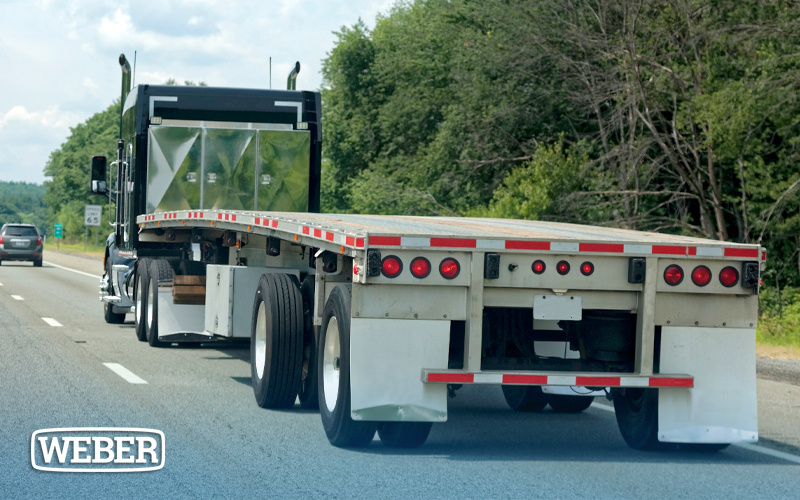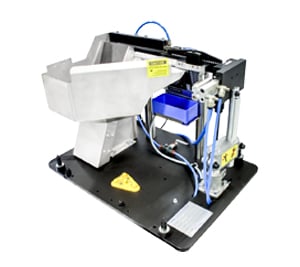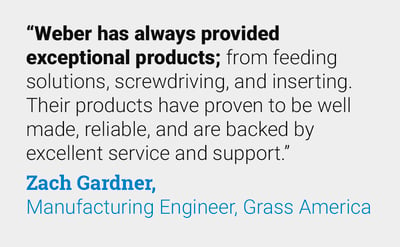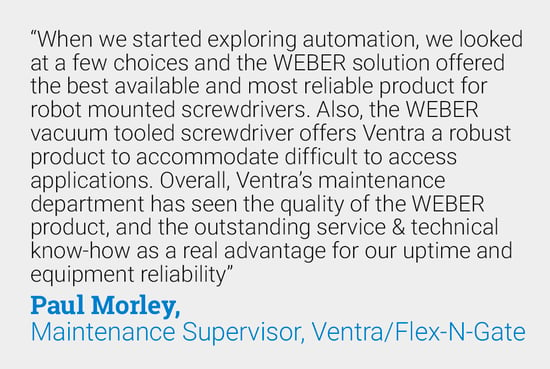3 min read
Common Challenges and Solutions for Tractor-Trailer Assemblies
By: Michael Rabasco Jun 20, 2024 9:00:00 AM

The tractor-trailer industry greatly benefits from the automation of repetitive tasks. Whether you are mass-producing semi-trailers or flatbed freight and transport trailers, WEBER Group can help you significantly reduce errors and make your day-to-day tractor-trailer assembly cost-effective.
Eliminating Trailer Assembly Headaches
High-speed and flexible rivet step-feeding systems with rivet length detection can be a game changer for tractor-trailer manufacturers for all types of freight and transport trailers, from refrigerated trailers to box trucks and wood flatbed trailers to livestock trailers. For example, even one part of the assembly, like the side walls and nose, can require the insertion of hundreds of rivets. When rivets are set manually, it's a time-consuming job fraught with worries about labor costs, labor shortages, ergonomic and quality issues. We have you covered with problems like these!
 While automating this process is not as simple as buying a bowl and spitting rivets down a piece of tubing, the opportunity to decrease cycle time is significant when we look at automating rivet insertion. Now, if we evaluate the assembly steps for the chassis on a trailer, the rivets near the bottom of a chassis are usually longer than the vertical rivets, and sometimes the rivet sizes are mixed up by the operators, or they get cross-germinated at the manufacturer. If a rivet that is too short is used along the bottom, it will fall out and fail, and if a rivet going up the sides is too long, it will not fit correctly. Because of this, length detection is critical in any automated process. We can help you here, too!
While automating this process is not as simple as buying a bowl and spitting rivets down a piece of tubing, the opportunity to decrease cycle time is significant when we look at automating rivet insertion. Now, if we evaluate the assembly steps for the chassis on a trailer, the rivets near the bottom of a chassis are usually longer than the vertical rivets, and sometimes the rivet sizes are mixed up by the operators, or they get cross-germinated at the manufacturer. If a rivet that is too short is used along the bottom, it will fall out and fail, and if a rivet going up the sides is too long, it will not fit correctly. Because of this, length detection is critical in any automated process. We can help you here, too!
Rivet Length Detection
When WEBER designs an automation process, rivet length detection is a must for tractor-trailer assembly operations. We understand it’s important that every single rivet being used is the correct length for that assembly. WEBER’s systems not only feed a rivet but it verifies that it is the correct length and diameter for the application. If it's not the correct length or diameter, that rivet can be autonomously rejected and removed from this assembly step.
Automating Manual Fastening Steps
Another great opportunity for automation during tractor-trailer assembly is when the wooden truck flooring is fastened to the chassis. This job csan be a very taxing, time-consuming, manual operation that can result in a large number of workers' comp claims.
Manual fastening is also prone to operator error because you have wider tolerance limits due to the variations in the hardness, natural knots, and water content of the wood. Scrap rates can be high because if you break a screw, you have to either grind it out or scrap the wood.
To combat these issues, after the boards have been squared and lined up, automation can make this back-breaking task very fast and efficient. Mounted drills can simultaneously drill holes across the entire bed, and then the WEBER high-speed, high-force drivers follow, inserting the floor screws and measuring active depth to ensure quick and accurate completion of the task in a few minutes. Each floor screw will be set sub-level within a very tight tolerance regardless of part placement using WEBER'S active depth feature.
WEBER can also help you monitor and make changes to specifications such as torque applied and final depth of insertion while screwing into wood, sheet metal, or other materials and is the only automated screwdriving equipment manufacturer that also offers an micrometer quality easily programmable analog depth sensor.
Since 1956, WEBER Group has been designing and building equipment solutions for the tough and demanding application needs of the assembly business, and we can help growing and expanding tractor-trailer manufacturers take their assembly process to the next level.







